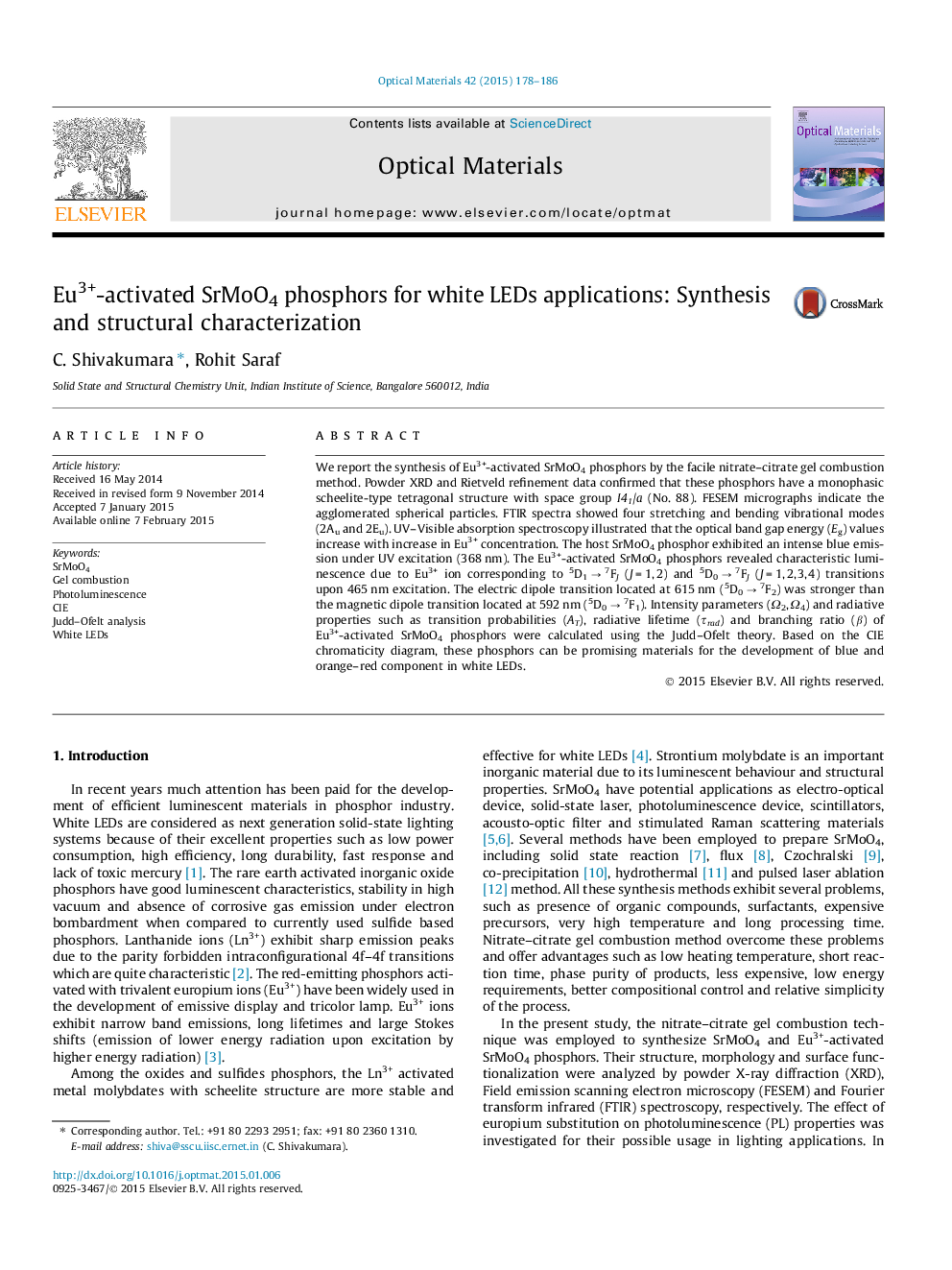| کد مقاله | کد نشریه | سال انتشار | مقاله انگلیسی | نسخه تمام متن |
|---|---|---|---|---|
| 1493930 | 1510792 | 2015 | 9 صفحه PDF | دانلود رایگان |

• SrMoO4: Eu3+ phosphors were synthesized using facile nitrate–citrate gel combustion technique.
• Host SrMoO4 phosphor revealed an intense blue emission under 368 nm excitation.
• Upon excitation at 465 nm, Eu3+-activated SrMoO4 exhibited orange–red luminescence.
• Judd–Ofelt parameters and other radiative properties of Eu3+-activated SrMoO4 have been determined.
• Present phosphors can be useful for fabrication of blue and orange–red components in white LEDs.
We report the synthesis of Eu3+-activated SrMoO4 phosphors by the facile nitrate–citrate gel combustion method. Powder XRD and Rietveld refinement data confirmed that these phosphors have a monophasic scheelite-type tetragonal structure with space group I41/a (No. 88). FESEM micrographs indicate the agglomerated spherical particles. FTIR spectra showed four stretching and bending vibrational modes (2Au and 2Eu). UV–Visible absorption spectroscopy illustrated that the optical band gap energy (Eg) values increase with increase in Eu3+ concentration. The host SrMoO4 phosphor exhibited an intense blue emission under UV excitation (368 nm). The Eu3+-activated SrMoO4 phosphors revealed characteristic luminescence due to Eu3+ ion corresponding to 5D1 → 7FJ (J = 1, 2) and 5D0 → 7FJ (J = 1, 2, 3, 4) transitions upon 465 nm excitation. The electric dipole transition located at 615 nm (5D0 → 7F2) was stronger than the magnetic dipole transition located at 592 nm (5D0 → 7F1). Intensity parameters (Ω2, Ω4) and radiative properties such as transition probabilities (AT), radiative lifetime (τrad) and branching ratio (β) of Eu3+-activated SrMoO4 phosphors were calculated using the Judd–Ofelt theory. Based on the CIE chromaticity diagram, these phosphors can be promising materials for the development of blue and orange–red component in white LEDs.
Figure optionsDownload high-quality image (244 K)Download as PowerPoint slide
Journal: Optical Materials - Volume 42, April 2015, Pages 178–186